For anyone who has spent time in an office environment, whether virtual or in person, you know that conflict abounds. You’ve likely experienced it in your personal life, too. Or, if your only introduction to disagreement has been the Conflict Resolution episode of “The Office,” you will still have some idea of what interpersonal and professional challenges can look like. As Michael Scott explains in the infamous episode, “The five styles of conflict resolution are: lose-lose, win-lose, compromise, win-win, win-win-win (the important difference here is with win-win-win, we all win, me too. I win for having successfully mediated a conflict at work.)”
While this article will divert from Scott’s approach to conflict resolution strategies, the above sets a good example of what not to do. You will also see that while some conflict resolution strategies can be used across all industries, other strategies are better suited for certain sectors more than others.
First, why investigate conflict resolution strategies at all? According to Harvard Business Review Ascend, managers in the U.S. spend as much as 40% of their time handling conflict. That is a whole lot of time on challenges, disagreements, confusion, discord, and general unhappiness that might be avoidable with good strategies in place.
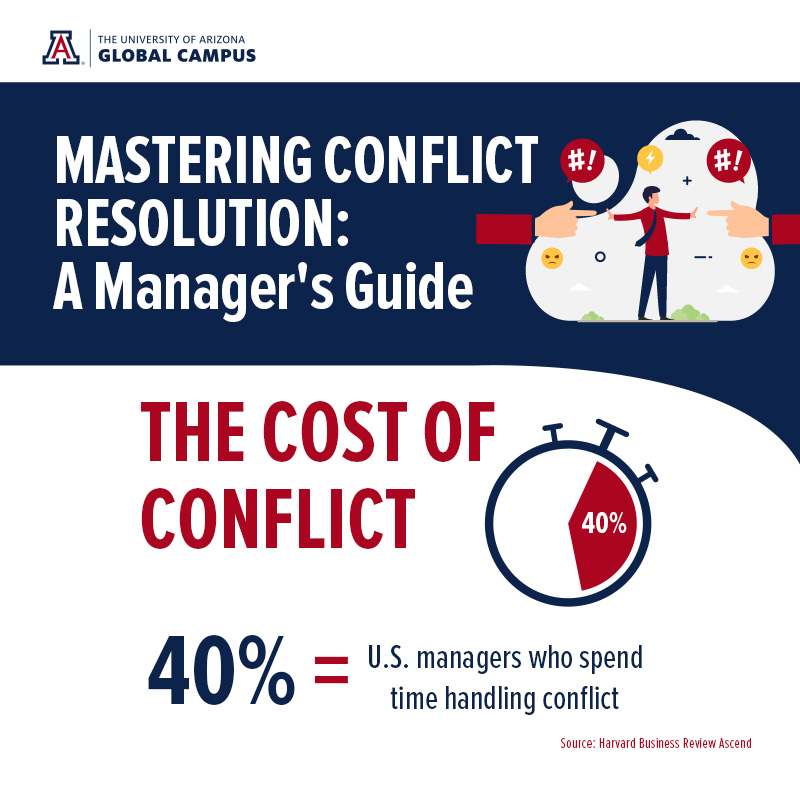
What Are 5 Conflict Resolution Strategies in IT Management and Other Industries?
In a 2023 Harvard Business Review article, Catherine Cote broke down the Thomas-Kilmann Conflict Model, which highlights five conflict resolution strategies: avoiding, competing, accommodating, compromising, and collaborating. Each is a mix of assertiveness (y-axis of the model) and cooperativeness (x-axis of the model) and can be described as follows:
- Avoiding: Low assertiveness, low cooperativeness - In the avoiding strategy, individuals tend to sidestep or ignore conflicts altogether. They may avoid expressing their own concerns and refrain from addressing the concerns of the other party. This approach is often used when the issue is deemed unimportant or when individuals want to delay dealing with the conflict. In IT management, you may recognize avoiding as a conflict resolution strategy when someone simply ignores a problem, a deadline, or even you. Of course, this type of avoidance could very well happen in any other type of industry, too.
- Competing: High assertiveness, low cooperativeness - The competing strategy involves a high level of assertiveness to satisfy one’s own concerns, often at the expense of the other party’s needs. Individuals using this strategy seek to win, dominate, or achieve their goals without much regard for collaboration or compromise. It is effective in situations where quick, decisive action is required. It’s common to see competing in IT management, and other fields for winning over technology selection, vendor selection, project prioritization, infrastructure design, and security policy implementation.
- Accommodating: Low assertiveness, high cooperativeness - Accommodating involves prioritizing the needs and concerns of the other party over one’s own. This strategy is characterized by a high level of cooperativeness and a low level of assertiveness. It is often used when individuals want to maintain harmony in relationships, value the relationship more than the specific issue, or when the issue is not crucial to them. Not surprisingly, where IT managers may have to draw a hard line – on hard skills and hardware – they may be able to flex when it comes to softer skills such as communication, team member training, work schedule flexibility, and task assignment.
- Compromising: Moderate assertiveness, moderate cooperativeness - Compromising aims to find a middle ground where both parties make concessions to reach a mutually acceptable solution. This strategy involves a moderate level of assertiveness and cooperativeness. It is useful when maintaining the relationship is important, and neither party’s concerns can be fully addressed without some level of sacrifice.
- Collaborating: High assertiveness, high cooperativeness - Collaborating is a win-win strategy that seeks to address the concerns of both parties fully. It involves high assertiveness in pursuing one’s own needs and high cooperativeness in understanding and meeting the needs of the other party. This strategy is ideal for complex issues where both perspectives are valuable, and a creative, integrative solution is possible. Again, like other areas of business and very similar to other fields, you will see IT management compromising over issues such as budget, timeline negotiations, technology stack selections (perhaps somewhat unique to IT management), security measures, and other matters that are very relatable industry wide.
Each of these conflict resolution strategies in IT management, and elsewhere, has its own advantages and disadvantages. The most effective approach depends on the nature of the conflict, the individuals involved, and the goals at stake. The model provides a framework for individuals and teams to understand and choose appropriate strategies for resolving conflicts.
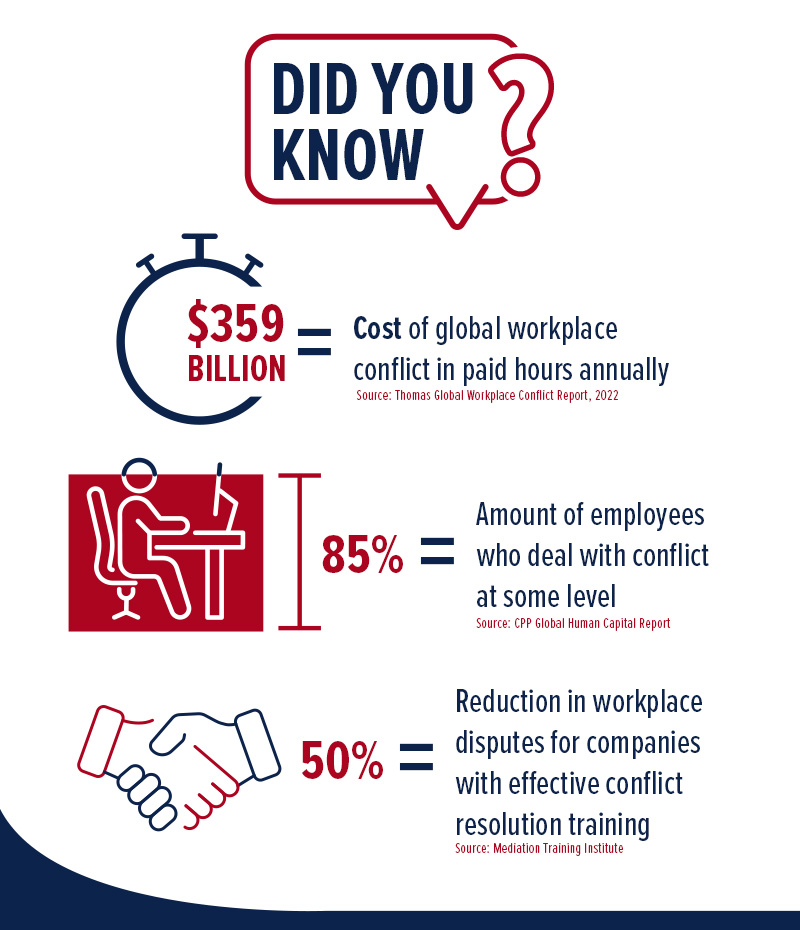
What Is Required of All Conflict Resolution Strategies?
Ultimately, the goal of any conflict resolution strategy is, perhaps not surprisingly, to achieve peace by resolving the disagreements and defining a plan moving forward to maintain the resolution. According to expert Jennifer Herrity, “You need both parties to agree on what the issue is and discuss needs that aren’t being met on both sides. Obtain as much information as possible on each side’s outlook. Continue asking questions until you are confident that all the conflicting parties understand the issue.”
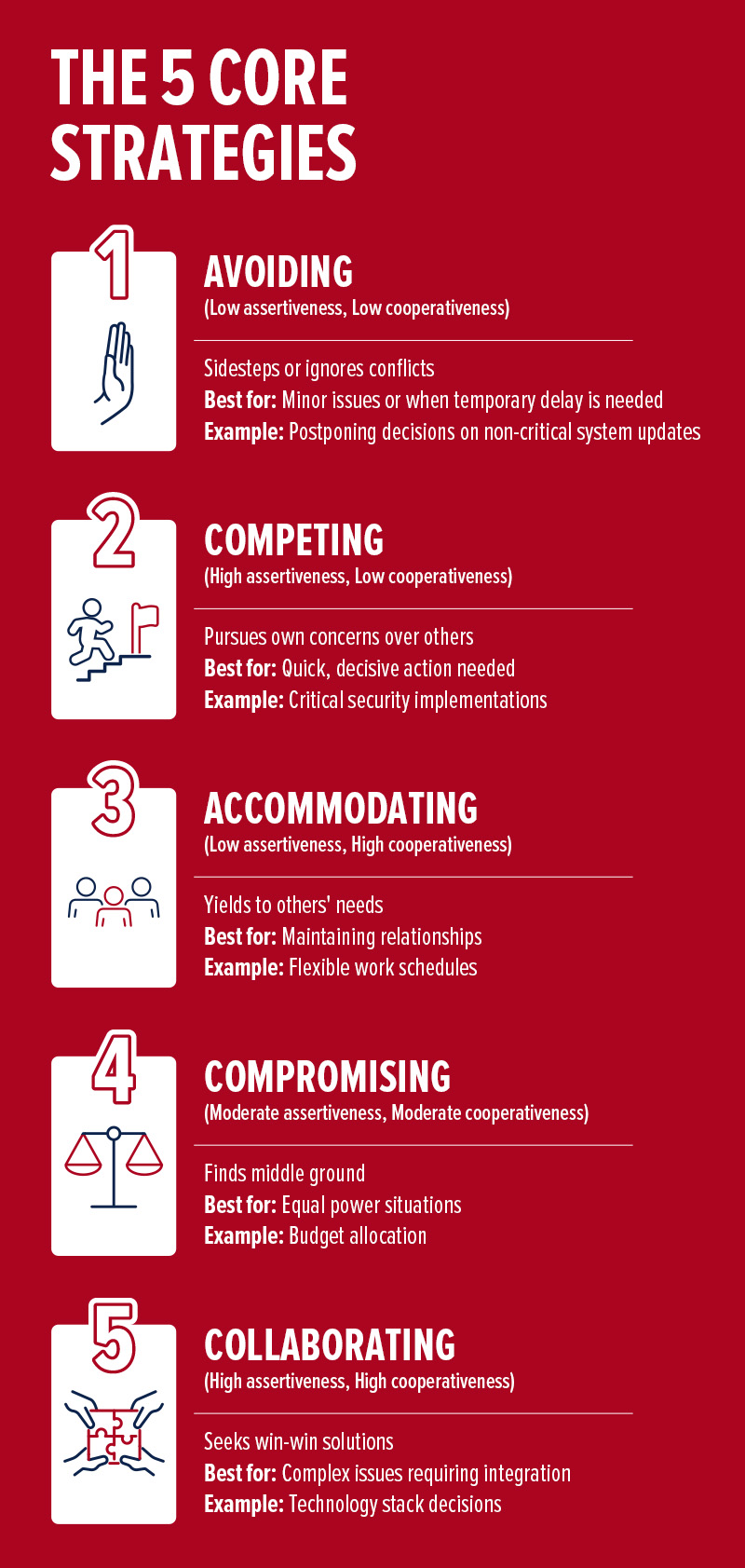
How Can You Adapt Strategies for Conflict Resolution?
Conflict resolution strategies call upon numerous skills, HelpGuide.org asserts, and when used correctly, you can adapt these skills to various situations in your personal or professional life. In addition to these skills, you may experience unexpected outcomes from resolving a conflict, such as a new or different side of a relationship. Let’s take a look at several skills from Indeed’s Career Guide and Novorésumé that you might expect to develop from using one of the five conflict resolution strategies.
- Communication skills
- Active listening skills
- Mediation skills
- Emotional intelligence
- Facilitation skills
- Problem-solving and critical thinking skills
- Assertiveness skills
- Increased productivity
- Professional growth
- Leadership skills
- Teamwork skills
- Patience
- Compromise
- Creativity
- Management skills
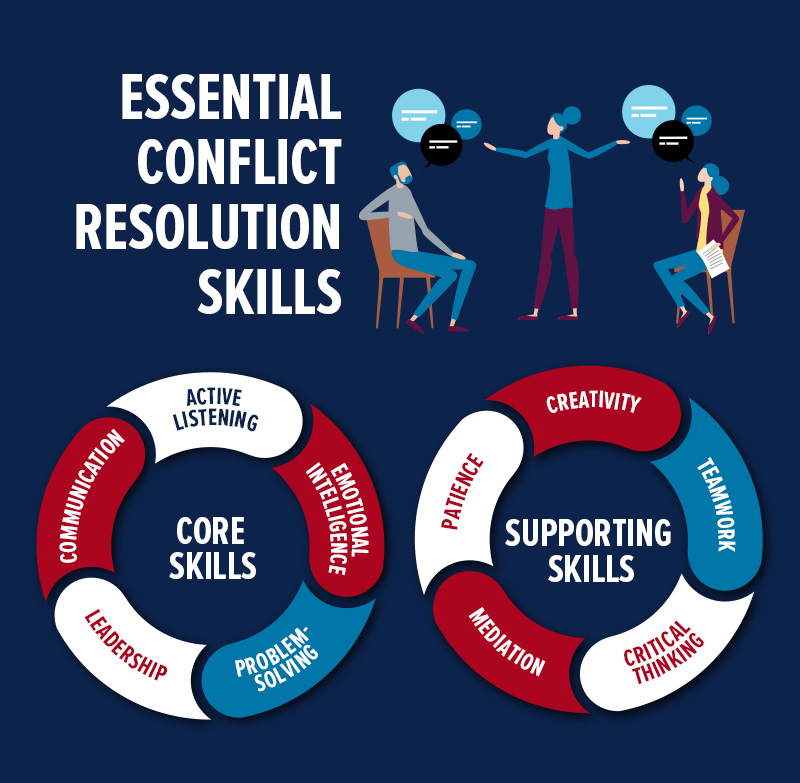
What Are Practice Strategies for Negotiation and Conflict Resolution?
Practicing the above skills will help you prepare for the times when conflict comes up. Flexing your patience, practicing your communication skills, mediation, and leadership, for example, will help you with conflict resolution should the occasion arise. And the occasion will indeed arise. Cultivating and honing the aforementioned skills is not merely a proactive approach to self-improvement; it is an investment in your ability to navigate the inevitable challenges that life presents. The more you practice the strategies, the better prepared you’ll be.
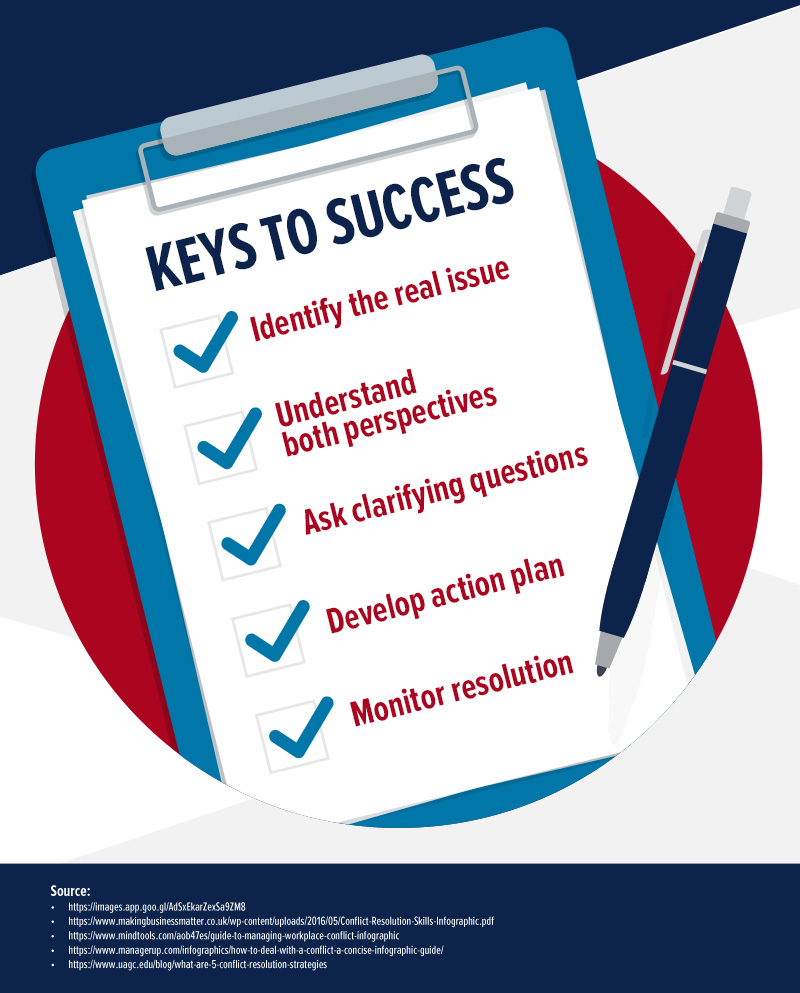
Overview: What Are Five Conflict Resolution Strategies?
The five conflict resolution strategies with which you may be familiar – avoiding, competing, compromising, and collaborating – come from the Thomas-Kilmann Model that depicts the amount of assertiveness and cooperativeness involved in each strategy to resolve the conflict. Each strategy has its merits and can be particularly effective in the world of IT management, as well as other professional and personal settings. Given that conflict can consume up to 40% of a manager's time in the U.S. , consider reducing your workload by brushing up on not only conflict resolution strategies but also the conflict resolution skills behind them. Enhancing your leadership, mediation, communication, and other skills will benefit you personally and professionally – not to mention, save you time.
Infographic

--
